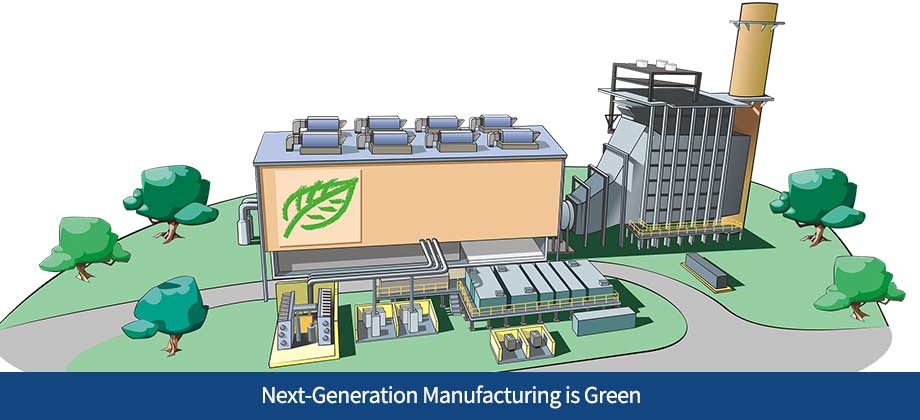Next-Generation Manufacturing is Green

We write a lot about sustainability here at ARF Financial. Once considered a trend, “going green” initiatives have taken center stage across nearly every industry—manufacturing included. But according to research about supply chains from Capgemini, “Fewer than one in four organizations is deploying sustainability use cases at scale.” This doesn’t mean sustainability initiatives are falling on deaf ears in the manufacturing landscape; to be sure, industry leaders fully recognize the need to integrate sustainable practices across their entire business model. The Capgemini research simply points out that there’s work to be done.
Historical Background
Historically speaking, manufacturing used to put cost-savings and profits way ahead of the environment. But since businesses rely on the public to ultimately define their ROI, and the public is tuned into reducing their carbon footprint, then it makes complete sense that nearly every industry is jumping aboard the sustainability train. We are moving more and more toward a circular economy now, one that aims to reduce the amount of raw materials used in production and recycle/reuse as much as possible. The goal of the circular economy is simply to repurpose existing items, keeping them in production rather than creating new components.
Green Manufacturing
Considered the “next generation of manufacturing,” green manufacturing is quickly gaining traction across the industry. It aims to create renewable manufacturing processes and eco-friendly business practices, in a grand effort to help reduce the negative impact manufacturing can have on the planet. Green manufacturing can be practiced by focusing on areas such as renewable energy, boosting energy efficiency, reducing pollution, and conserving natural resources.
Mindset Shift
It’s a tough pill to swallow, going from “profits first, planet later” to the longer-term goal of green manufacturing. Traditional manufacturing is all about cost-effective measures and completing things quickly at the cheapest rate possible; unfortunately, the damage this does to our planet through greenhouse emissions, product waste, water usage, etc. is becoming more apparent by the day. The upside is that while shifting gears to focus more on sustainably manufacturing goods might be expensive in the short-term, there are huge cost savings in the long-term. The first step toward going green might just be admitting that there’s a problem—and dedicating some resources to fixing it. Which brings us to…
E3: Economy – Energy – Environment
The Environmental Protection Agency (EPA) has been working to help speed this mindset shift along, going so far as to develop E3, “a federal technical assistance framework helping communities, manufacturers and manufacturing supply chains adapt and thrive in today’s green economy.”
According to the E3 website at EPA.gov, “E3 connects agencies and organizations in local communities and small and medium-sized manufacturers with experts from federal agencies, states, and regions to help reduce energy consumption; minimize carbon footprints; prevent pollution; increase productivity; and drive innovation.” The goal of this initiative is to renew American manufacturing, and it’s doing so by giving manufacturers the technical assistance they need to make sustainable manufacturing processes a reality. There are many success stories on the E3 site too, which can be accessed here.
Companies that make their green efforts top priority should be shouting their accomplishments from the rooftops—or at least making a big deal about it via PR. Don’t forget, Gen Z is leading the way in demanding more sustainability; they’re even willing to spend more on sustainable products—so there shouldn’t be too much left standing in the way of a green manufacturing takeover. Go green for the good of the planet, for the good of your brand, and for the good of your profits.

